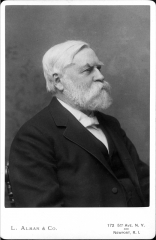The first of the new buildings of the Cutten period was the dormitory, Andrews Hall, made possible by the bequest of Richard M. Colgate, supplemented by gifts from his brothers. Designed in “collegiate Tudor” by Frederick H. Gouge and William M. Ames of Utica, it was completed in 1923 and named for the late Newton Lloyd Andrews, beloved dean and Professor of Greek.
The gymnasium was the second of the new buildings. As early as 1911 “Doc” Huntington had pointed out that the rapidly expanding enrollment had made the old gymnasium most inadequate and soon plans were underway to replace it. Actual construction, however, had to wait until 1924 when alumni and students, led by George W. Cobb, ’94, President of the Alumni Corporation, and Clarence J. Myers, ’20, staged an enthusiastic and successful drive to raise the necessary funds to supplement those already pledged and those contributed in the 1920 financial campaigns. Under the direction of Franklin B. Ware, architect of New York, the building, including the swimming pool, the gift of James C. Colgate, was completed in 1926. Named in tribute to the beloved Dr. Ellery Channing Huntington, the “grand old man of Colgate athletics,” it proved admirably suited to the University’s needs. The old gymnasium which it was planned to convert into a student union and Y building, was destroyed by fire only a few weeks before its successor was ready for occupancy.






